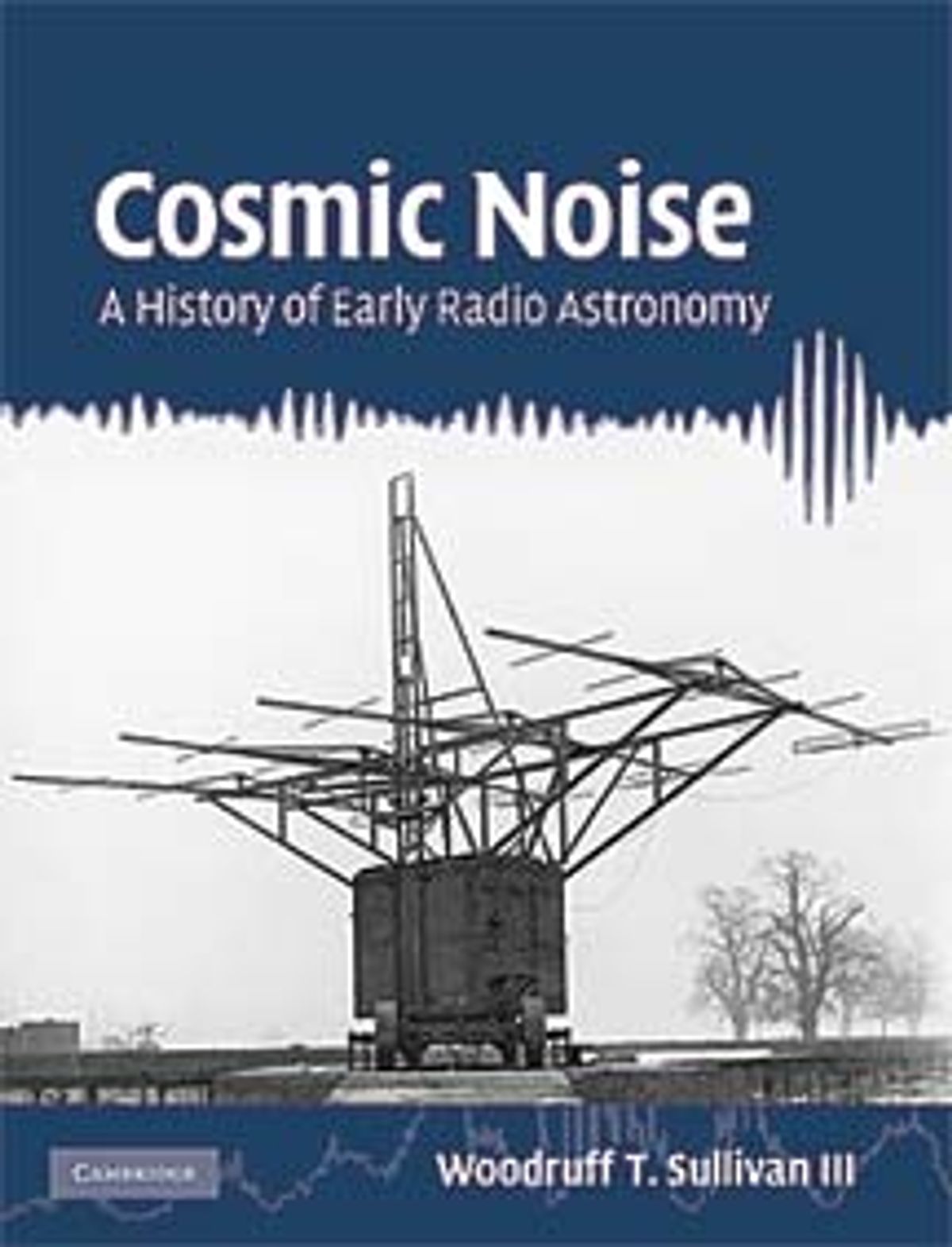Reviewed by Kieron Murphy
Through the ages, humans have stared at the night sky and wondered how there could be so many stars. In the 17th century, we got our first inkling that there was more to the heavens than we could simply see with our eyes.
It wasn’t until the 20th century, though, that radio researchers accidentally discovered that the silent sky above us was awash with noisy sources of electromagnetic radiation spanning the spectrum. It was a "transformative event," according to radio astronomer Woodruff T. Sullivan III, no less profound than the development of the optical telescope centuries earlier.
Sullivan, a professor of astronomy and history at the University of Washington, in Seattle, has produced a definitive chronicle of the cavalcade of breakthroughs that led to a new field of science within a very short time—short for science but a long time when writing a book. By his own admission, Sullivan compiled Cosmic Noise over the course of three decades, the same length of time he covers in the book, from Bell Labs researcher Karl Jansky’s serendipitous detection of extraterrestrial radio emissions in 1932 until the maturation of the field in 1953.
Technologists quickly realized that not only was our own star, the sun, bathing us in radio noise (and interfering with earthly transmissions) but so were other stars from our own galaxy and others beyond the Milky Way—even the interstellar medium of hydrogen throughout the universe was a source. Engineers and physicists who had previously thought of themselves as radio specialists suddenly constituted a generation of "new astronomers."
These included the likes of Grote Reber, an engineer from Chicago who built the United States’ first radio telescope in his backyard; James Stanley Hey, a British scientist who deduced the effects of the sun on radar operations during World War II; George Southworth, another Bell Labs researcher who studied the sun at centimeter wavelengths; Martin Ryle, a Cambridge University professor whose team identified the first radio stars; Edward Bowen and Joseph Pawsey, of Sydney, whose laboratory gained fame for detecting galaxies contributing to cosmic noise; and many others from around the world.
Despite the ominous look of it, Sullivan’s tome (exquisitely annotated for scholars) possesses an engaging style and is accessible to experts and novices alike. It’s likely, though, that most copies will end up in university libraries. That will not be a poor reward for someone who has obviously devoted such a large portion of his life to a labor of love for his profession.
For more book reviews, see the full list.
About the Author
Kieron Murphy is a frequent contributor to IEEE Spectrum. In the March 2010 issue, he reviewed Something Incredibly Wonderful Happens: Frank Oppenheimer and the World He Made Up, by K.C. Cole.

